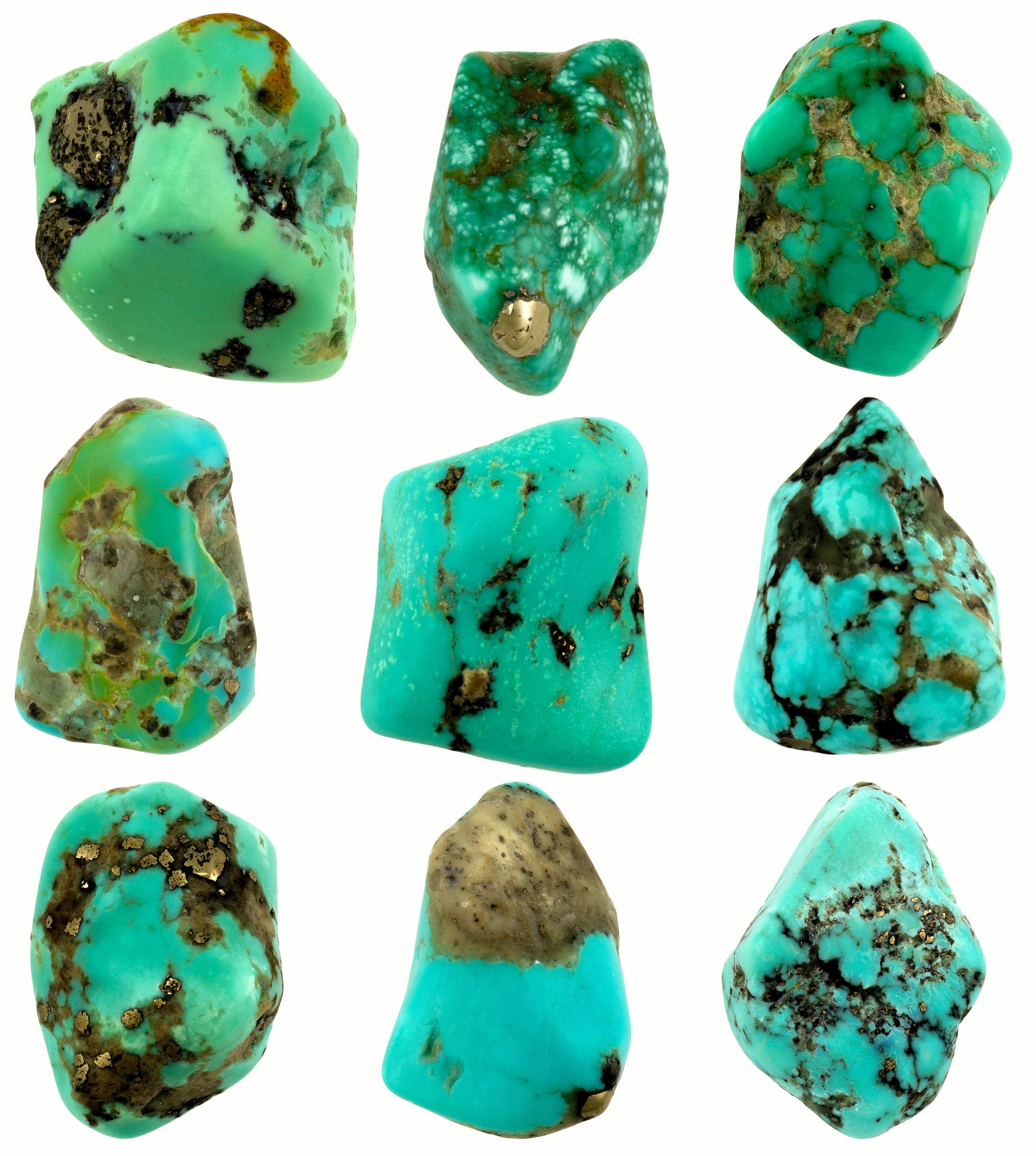Turquoise is the birthstone for December and the zodiac sign Sagittarius. Turquoise is called “mefkat” in Egypt, which means “joy” and “delight.” It is considered one of the world’s most ancient gems.
History
Egyptian tombs are the primary evidence for the existence of turquoise jewelry dating back to 3000 BCE. The tomb of King Tutankhamun, who was a Pharaoh in Egypt, was one of these pieces of evidence. His burial mask was extravagantly decorated with turquoise. This means that the gemstone turquoise has been around for a long time in Egypt. The oldest turquoise mines are found on the Sinai Peninsula in Egypt.
Through archaeological excavations, it was also found that Chinese artisans were carving turquoise over 3,000 years ago.
Even ancient Persia hinted at the existence of turquoise by engraving it in Arabic script. They covered their palace domes with turquoise since its sky-blue color represented heaven. The use of turquoise inspired several architectural structures, including the Taj Mahal. Turquoise was strongly believed to guarantee protection, so the Persians ornamented their daggers and horses’ bridles with the gemstone. They also wore turquoise jewelry around their necks and in their turbans for additional protection.
The name turquoise was derived from the French “pierre tourques” which means “Turkish stone,” after Turkish traders introduced this “Persian blue” stone to Europe via the Silk Road in the 13th century.
Turquoise became valuable in Native American trade, especially when pre-Columbian Native Americans mined the turquoise stone throughout the present-day southwestern United States.
Where They Are Mined
Iran has the best quality turquoise deposit but in relatively small quantities. It has been an important source of turquoise for at least 2,000 years. Other mine spots for the stone are in California, New Mexico, Arizona, Nevada, Utah, Colorado, England, Australia, Siberia, France, Germany, Chile, Egypt, Tibet, Mexico, and China.
Many historic sites of turquoise have been depleted already, though some are still working to this day. They are all small-scale operations that are often seasonal because of the limited scope and remoteness of the deposits. Most are worked with little or no mechanization.
In the United States, turquoise is often recovered as a byproduct of extensive copper mining operations.
Popular Usage
Turquoise is cherished for its metaphysical characteristics as a protective power that the Aztecs used on ceremonial masks, knives, and shields. Turquoise is inlaid together with gold, quarts, jet, jade, coral, malachite, and shells into the provocative and ceremonial mosaic objects mentioned.
They are also used for beads, carvings, cabochons, and inlays. The stone was used as beads in cameos, while irregular pieces were used for mosaics in the past.
Turquoise is used extensively to decorate objects, mosques, and other important buildings in Persia.
Turquoise is often mottled and has dark splotches; it also has veins of matrix running through it, which give it a very classical look for a piece of jewelry, especially since it forms cobweb-like designs.
Manufacturers and artisans fashion turquoise into round or oblong beads for strand necklaces and small flat pieces. The top color blue turquoise is engraved with Persian or Arabic inscriptions inlaid with gold.
Chemical Composition
The chemical composition of turquoise is a hydrated phosphate of copper and aluminum. Turquoise is a cryptocrystalline mineral (rock texture made up of crystalline nature that is only vaguely visible under a microscope) that rarely forms single crystals. It assumes no definite external shape. On the Moh’s scale, the gemstone rates 5 to 6 on the hardness scale. The sparkly characteristic or refractive index of turquoise varies from 1.61 to 1.65.
Color
Turquoise has been long valued for its intense color which varies from sky blue to a paler sky blue, to greenish blue, or pale green, reliant on the quantities of iron and copper within it. Its blue color is because of its idiochromatic (having a distinct color) copper, while green turquoise results from iron impurities.
Scarcity
Turquoise is one gem that is currently facing depletion. This is because several turquoise mines in the southwest have been closing. Increased government mining restrictions paired with the lessening of previously ample turquoise within the mines have led to the scarcity of authentic, raw turquoise.
Today there are less than 10 open mines for turquoise mining compared with the 180 open mines in the 1970s.
Interesting Facts
- Turquoise is considered the gemstone for every 11th wedding anniversary.
- Apache (a group of culturally related Native American tribes in the Southwestern United States) Indians believed that attaching turquoise to bows and firearms improved a hunter’s precision.
- Tibet made turquoise its national gem.
- Before scientific research proved that turquoise fades in color, especially when exposed to the sun for a long time, ancient people believed that the color change showed illness or danger.
- Turquoise is the only stone to have an official color termed after it.
- Tibetan and Nepalese people referred to turquoise as the “Sky Stone” or a stone that is a gift from heaven.
- The stone is said to represent wisdom, tranquility, happiness, good fortune, and protection.
- It is among the world’s oldest jewelry.
General Cost
The most preferred color of turquoise is the strong sky blue. While pale greenish blue is less highly prized and the pale green variety even lesser. Retail turquoise can be bought at $1 to $10 per carat. The highest can go up to $3,000 per carat or more.
Final Thoughts
Turquoise is a perfect example of a heavenly color that has earned its place as one of the officially recognized colors.



